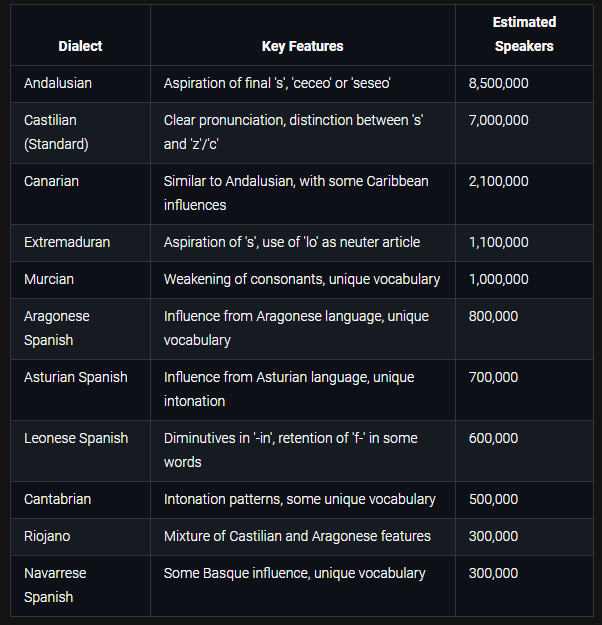ISO uses "ca" & "ca-ES" for Catalan, but "es-AR" for Argentine Spanish. Why this discrepancy when Catalan dialects are as distinct as Spanish variants? Seeking linguistic rationale. #LanguageCodes #Linguistics #catala #catalan #ISO #ISOlanguage
@mgc Amb el teu background informàtic, ens saps quelcom més que pugui explicar aquest lògica en la ISO i que es basi en raons de desenvolupament de software?
@daviddelven Standard country-language codes are comprised of two arguments separated by a dash, for example "fr-CA" is French Canadian.
The first argument is a valid ISO Language Code. These codes are the lower-case two-letter codes as defined by ISO-639.
The second argument to both constructors is a valid ISO Country Code. These codes are the upper-case two-letter codes as defined by ISO-3166.
@jeroen The Catalan situation isn't unique, but it's still puzzling. Languages like Kurdish, Quechua, and Occitan face similar challenges (significant dialectal variations but limited ISO code recognition). This contrasts sharply with Arabic's extensive dialect representation.
@jeroen With nearly 10 million Catalan speakers, we're not a small linguistic community, yet our dialects lack specific codes. This inconsistency in ISO standards seems rooted in a complex mix of historical, political, and standardization factors rather than purely linguistic or demographic considerations. As a digital ecosystem expert, I find this troubling. It raises crucial questions about how we represent linguistic diversity in our digital world.
@jeroen The ISO language code is ca / cat. Should not be ca-AD ? It is clear that this is not a science-base discussion.
@jeroen and the last one on this thread: se Sami (Northern)
se-FI Sami (Northern) (Finland)
se-FI Sami (Skolt) (Finland)
se-FI Sami (Inari) (Finland)
se-NO Sami (Northern) (Norway)
se-NO Sami (Lule) (Norway)
se-NO Sami (Southern) (Norway)
se-SE Sami (Northern) (Sweden)
se-SE Sami (Lule) (Sweden)
se-SE Sami (Southern) (Sweden)
@daviddelven Indeed, ca-AD represents the Catalan language as spoken in Andorra. It is not a perfect system, as sometimes the variations of a language within a single country a far bigger than the differences between two countries. I get why there are different denominations for different dialects as es-ES, es-AR and es-MX, but if we want to specify a special flavour, I would also like a way to indicate the Andalusian dialect.
@daviddelven
It's not a linguistic rationale, but a geographic one, the upper-case letters being country codes, not dialect codes
@jeroen Indeed. It is clear that is not a scientific-linguistic approach, but a political one due to the domain complexity. A dialect is a dialect, no matter if its use is as a single/multi country or regional level. That is why I don't understand this ISO and its lack of consistency.
@jeroen Here there is the list of Spanish dialects spoken in Spain. We can consider them at the same linguistic categorization level as Argentinian, Chilean or any other LATAM-based Spanish dialect. Therefore the ISO is something totally independent from any linguistic and scientific approach.

@ancientsounds It seems so. That's why it's difficult to me to see the value of this ISO, among other inconsistency issue.
@ancientsounds Geographic does not mean country-based. The case of SAMI language and its bunch of dialects accross many countries is the inverse case of Catalan (multi-country vs no-country). If the ISO relies just on Country... lacks on value.
@daviddelven no crec que sigui un tema informàtic, veig més un tema de fronteres. Si França no fos xom és, podríem trobar un ca-FR, potser... No he comprovat si existeix... Què fa servir Andorra?
@mgc A Andorra ca i cat. (no pas ca-AD). Després d'aprofundir-hi, veig qie és un yema totalment arbitrari i subjecte a decisions político-històriques i no basades en lingüística.
@daviddelven Doncs ja és això. Políticq i no tècnica. Lingüística per sota de la política. Per això va costar tant, en un altre ordre de coses, tenir el domini .cat... Significava independència lingüista de es, fr i it...